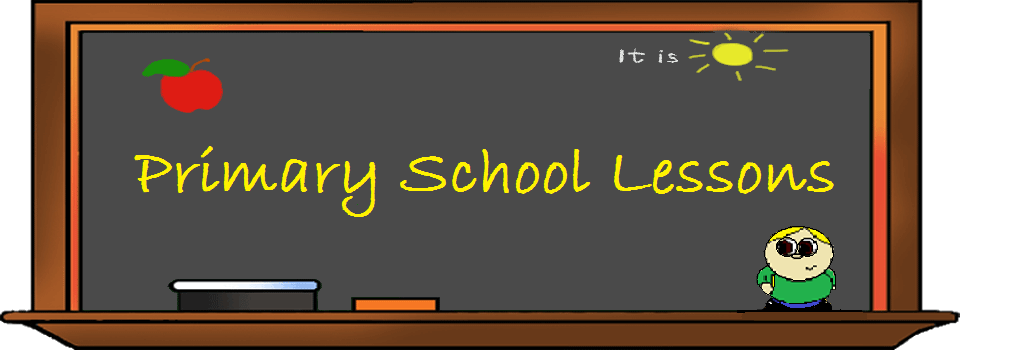History: Homes in the Past
Get the children to draw a picture of their house on one half of a sheet. Get them to tell their partner what their house is like, how many rooms it has, what it is made of etc. Have them set aside this picture, to complete it later.
Look at houses people lived in long ago, when their Great Granny and Granddad were little. Using whiteboard markers and laminated pictures of old thatched houses, get them to circle parts of the house that are different from their own. Each group can get a different style of old house.
These images do not belong to me. They are used for education purposes.
You can then talk about all the things they noticed and, as a class, get them to point out these things in their picture: Show me the straw roof! Show me the little door! Show me the stone walls! Show me how many rooms they had on your fingers etc.They can then draw a picture of a house from the past on the other half of their page.
Science: Electricity at Home
 Before the lesson, unplug your class CD player or laptop and discuss why it isn't working. This should lead into a discussion on electricity, plugs and switches. Play a game of 'I Spy', getting them to spy things in the classroom that use electricity. You can also pull some items out of a 'magic bag' and get them to tell you whether they use electricity or not. (Useful tip for them: They need a wire and a plug if they do!). As a concluding activity, colour in things in their workbook/worksheet that use electricity and cross out the ones that don't.
Before the lesson, unplug your class CD player or laptop and discuss why it isn't working. This should lead into a discussion on electricity, plugs and switches. Play a game of 'I Spy', getting them to spy things in the classroom that use electricity. You can also pull some items out of a 'magic bag' and get them to tell you whether they use electricity or not. (Useful tip for them: They need a wire and a plug if they do!). As a concluding activity, colour in things in their workbook/worksheet that use electricity and cross out the ones that don't.
In the following lesson, you can discuss electrical safety and read the story: ‘Lil’ Plug and Lil’ Red Safety Adventures'. Get them to make stop signs and hold them up anytime the characters in the story are doing something dangerous with electricity. Following the story, to sum up the learning, you can play some games to revise and test the children's learning on the Spot The Danger Interactive Game.
Geography: Homes

 Discuss and play matching games with the rooms in the house and what they contain (see picture above). Then get each table to create a house, as each child at the table is assigned a particular room to create. Once all the rooms have been created, get the group to stick them onto the house frame, to make their house.
Discuss and play matching games with the rooms in the house and what they contain (see picture above). Then get each table to create a house, as each child at the table is assigned a particular room to create. Once all the rooms have been created, get the group to stick them onto the house frame, to make their house. |
| http://s0.geograph.org.uk/geophotos/01/33/25/ 1332594_fed6200e.jpg |
Art: The House That Grew:
Talk about the story of the house that grew:

“A husband and wife moved into a house in the middle of the forest. At first this house was very small, but, as time went on and the couple had more and more children (go into detail), the house got bigger and bigger. The husband and wife kept thinking of new and exciting things and rooms to add to their house, things that no one had ever thought of before. If anyone saw the house they would think it was the strangest house they had ever seen. They tried to make every room they built have something to do with things that the child liked to do. It was the most funny looking house that there ever was, with all kinds of strange things sticking out of it, lots of different shapes, things made from the funniest of materials, furry things, shiny parts, wooden things and even some 'holey' parts!”
Make collage houses using various material types with lots of 'funny' extensions!


Music: Building Composition:
Talk about things you would do on a building site when building a house. Mime some things one could do (using sounds) and the rest of the class can try to guess what activity is creating the noise. Create a building composition with each group taking a particular working tool to do the sound and action of. Get each child to draw a picture of the tool they are making the sound of and stick them onto a long sheet of paper to form a composition sequence. Performed this following the composition chart (using dynamics also).
English: Poem:
Chores
 |
| http://hookedonthebook.com/wp-content/uploads/2012/08/kids-chores.jpg |
‘"Do the dishes,
Clean your room,
Use the vacuum,
Then the broom,
Wash the laundry,
Fold the clothes,
Clean the fridge,
Then the stove,
Wipe the counters,
Mop the floor,
Scrub all around,
Your bedroom door,
Clean the bathroom,
Toilet and all.
Get all your things,
Out of the hall,
You listening, Tom?"
Clean your room,
Use the vacuum,
Then the broom,
Wash the laundry,
Fold the clothes,
Clean the fridge,
Then the stove,
Wipe the counters,
Mop the floor,
Scrub all around,
Your bedroom door,
Clean the bathroom,
Toilet and all.
Get all your things,
Out of the hall,
You listening, Tom?"
I have to go,”
“What’s that Mom?
I wasn’t, no.”’ “What’s that Mom?
from http://zelmo13.easycgi.com/childrenspoems/poempoetry43957.htm
Our Homes and Houses Noticeboard:














